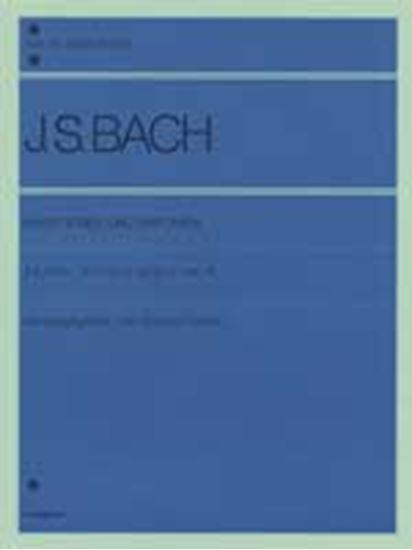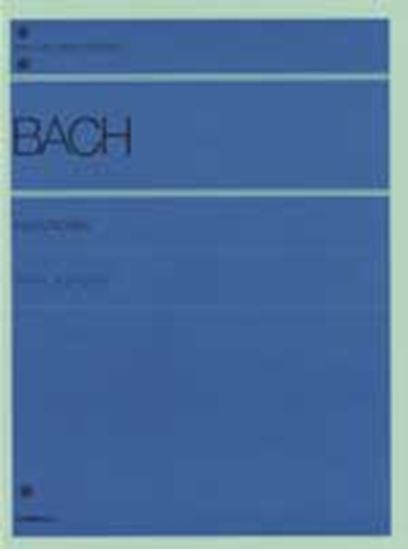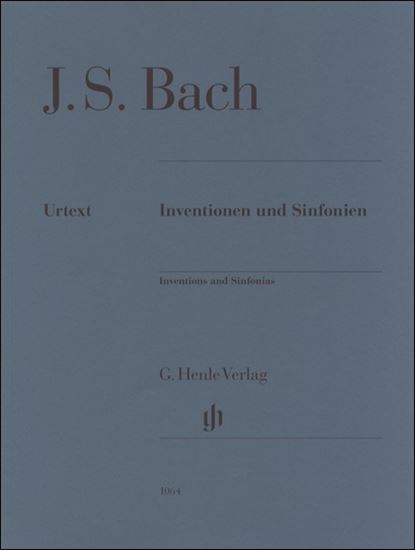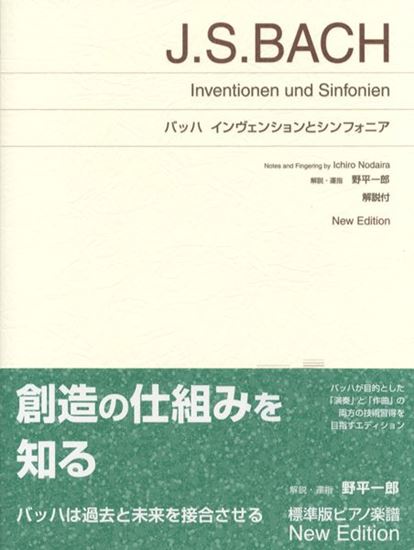Bach, Johann Sebastian : Sinfonia Nr.12 A-Dur BWV 798
Work Overview
Genre:pieces
Total Playing Time:1 min 40 sec
Copyright:Public Domain
Commentary (3)
Author : Takamatsu, Yusuke
Last Updated: September 18, 2020
[Open]
Author : Takamatsu, Yusuke
A major, 4/4 time.
It has a bright and charming character and is written in a fugal style. At the beginning, the middle voice rests, while the upper voice plays the subject and the lower voice plays the countersubject. This countersubject is varied in various ways and combined with the subject. The subject includes a pedal point on the dominant at the beginning of measure 2. Through the repeated use of this motive in isolation, the bass voice functions as a relatively long pedal point (e.g., from measure 9).
The entire piece is divided into two sections; however, in the latter half (from measure 15), the complete subject appears only three times, and the section is primarily dedicated to the development of material contained within the subject.
Author : Hayashikawa, Takashi
Last Updated: March 15, 2018
[Open]
Author : Hayashikawa, Takashi
Musical examples provided by: Bärenreiter Verlag
Author : Ooi, Kazurou
Last Updated: March 12, 2018
[Open]
Author : Ooi, Kazurou
Sinfonia No. 12 in A Major
Perhaps 'noble joy' is an apt characterization? It is a bright, joyful, and dignified Sinfonia. The reason why the tempo of this Sinfonia should be relatively quick lies in the movement of the left-hand bass. Please observe the left-hand bass movement in measures 9-12 and 20-23. A sequence descends in sixteenth notes, utilizing a pedal point (also known as an organ point, a sustained or repeated note over which harmonies change).It is evident that this sixteenth-note figure does not induce a state of calm; rather, it suggests a highly joyful or unstable condition. However, despite the imperative to maintain fugal order, this sixteenth-note pattern is found only in the left-hand bass and not in the alto or soprano voices. So, where did this material originate? It is extracted from the soprano voice in measures 2, beats 1-2, which is part of the subject. Bach extracted only this portion to create a long sequence, which consequently results in a bass movement akin to a basso continuo. Consequently, when playing these left-hand sixteenth notes, a tempo setting that prevents heaviness and propels the music forward is desirable.Furthermore, given the character of the piece, when observing the bass movement in measures 1-4, an articulation that is never heavy, specifically staccato eighth notes, is desired. Eighth notes accompanied by rests may be rendered staccato or shortened to some extent.Beyond that, there is a unique point of attention for this Sinfonia: the pedal. To preserve the polyphonic integrity and connect voices that require legato, the pedal becomes indispensable. I will explain while pointing out these locations. First, let's play the right hand from measure 9, beat 3, to measure 15, beat 1. The author refers to the Henle edition. If one follows the fingerings, it might just be possible to connect from measure 9, beat 3, to measure 13, beat 3, with fingers alone. However, if this is difficult, the pedal can be used momentarily to connect the voices that would otherwise be disconnected. The pedal should be applied in two places within each measure: from beat 4 to beat 1 of the next measure, and when moving from beat 2 to beat 3 within the same measure. In other words, as the connection breaks at the moment the right-hand half notes change, the pedal is used momentarily there.Suppose these soprano and alto voices were connected solely by fingers, without using the pedal. Even so, please observe the alto voice from measure 13, beat 3, to measure 15, beat 1. It is simply impossible to connect F# E D# F# E# F# with fingers alone. Here too, the alto voice should be connected using the pedal, to an extent that does not overly blur the right-hand sixteenth notes.Similar locations include from measure 18, beat 3, to measure 20, beat 1, and from measure 21 to measure 25. The pedal should be used in each of these instances. In measure 24, the alto G# G# F# F# E E should also be connected without breaks.The next pedal application is an exception: in measure 27, beat 1, the pedal must be employed to sustain the bass A for one beat, because the alto voice leaps high.Additionally, I will explain the hand changes between the left and right hands. In measure 4, beat 2, the on-beat D# and A should be taken by the right hand. The on-beat bass B and the first off-beat alto B should be taken by the left hand with finger 5, as 5-5. The eighth-note alto B should be taken by the right hand.In the same measure, the alto voice from beats 3-4 should be taken by the left hand up to the C# in the following measure.In measure 8, the alto voice from beat 2 to beat 1 of the next measure should be taken by the left hand.
PTNA & Partner Channel Videos(3items)
Sheet MusicView More
Scores List (42)

カワイ出版

(株)ヤマハミュージックエンタテインメントホールディングス

(株)全音楽譜出版社

(株)全音楽譜出版社

(株)ドレミ楽譜出版社

(株)音楽之友社

(株)全音楽譜出版社

(株)音楽之友社

(株)音楽之友社

(株)ドレミ楽譜出版社

(株)ドレミ楽譜出版社

(株)ドレミ楽譜出版社

(株)ドレミ楽譜出版社

ヘンレー

ヘンレー

カワイ出版

(株)渓水社

(株)音楽之友社

(株)全音楽譜出版社

(株)エー・ティ・エヌ

(株)全音楽譜出版社

カワイ出版

(株)音楽之友社

(株)音楽之友社

ヘンレー

ヘンレー

(株)学研プラス



















